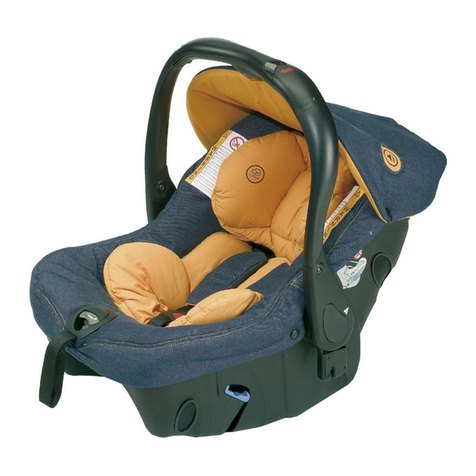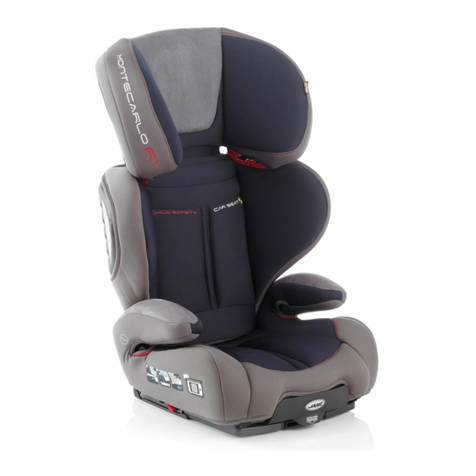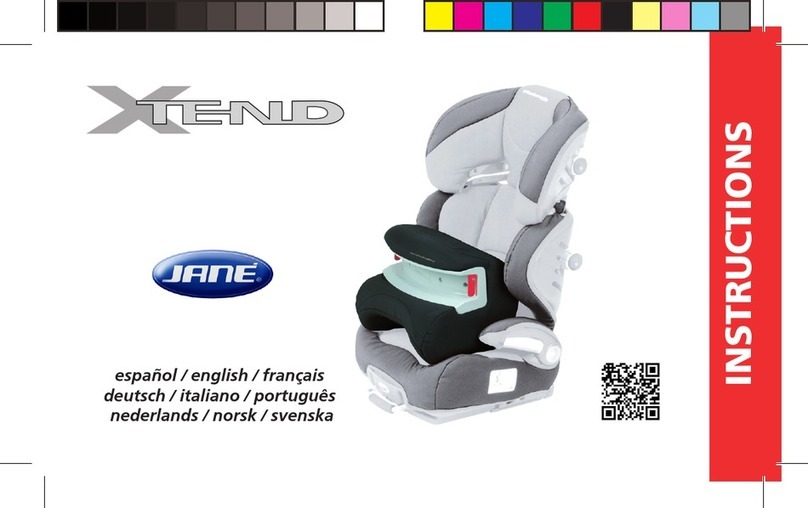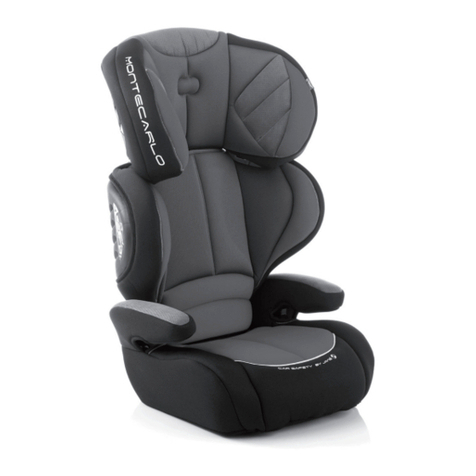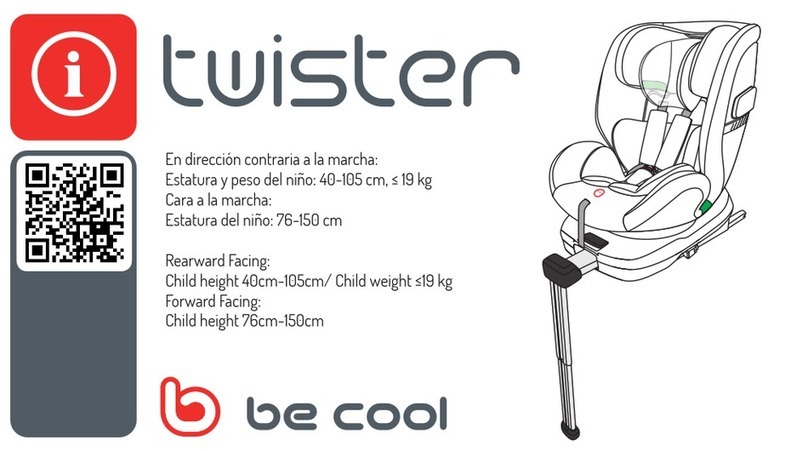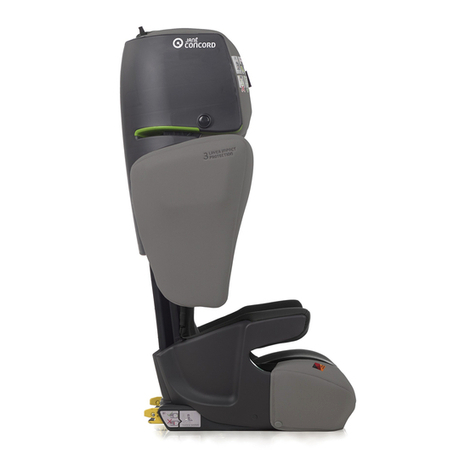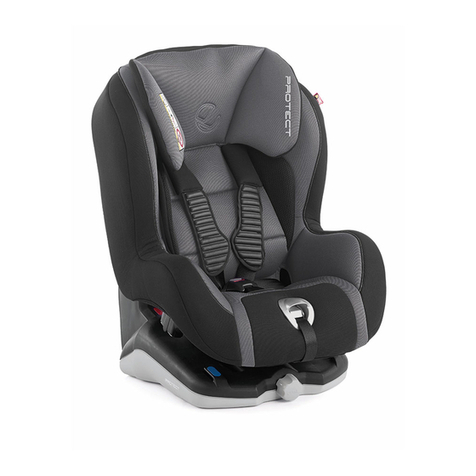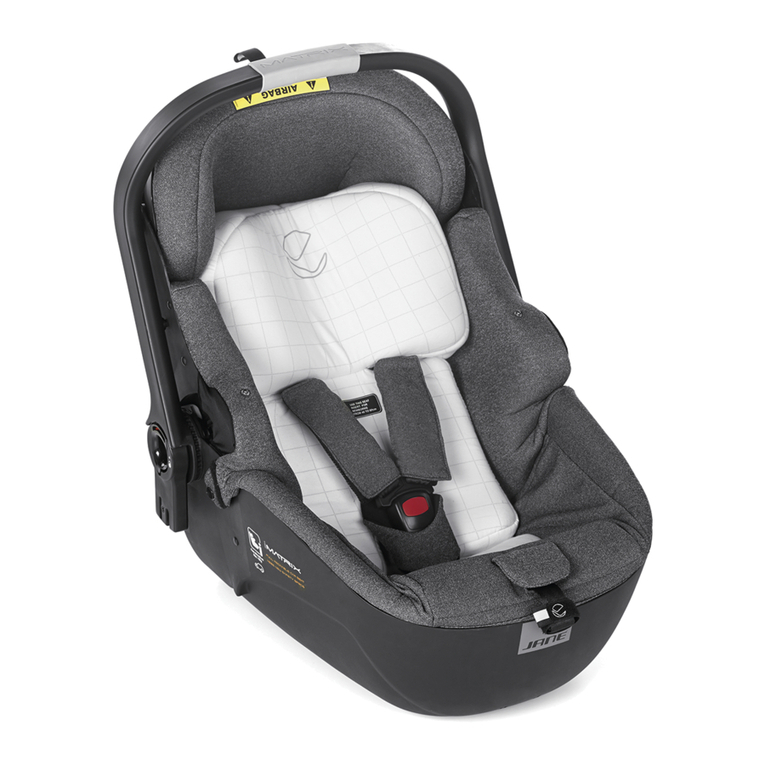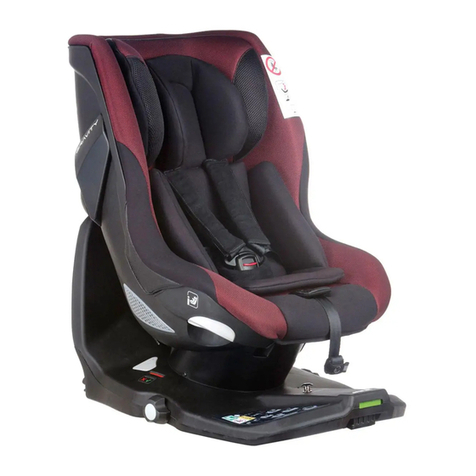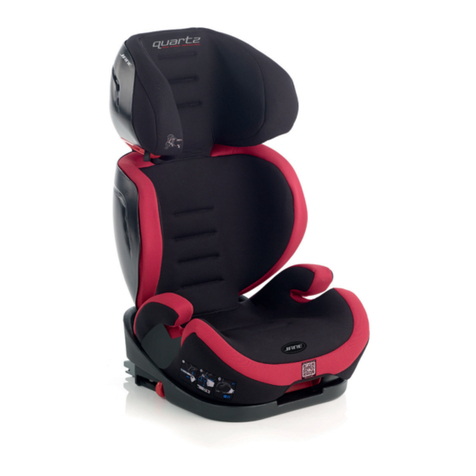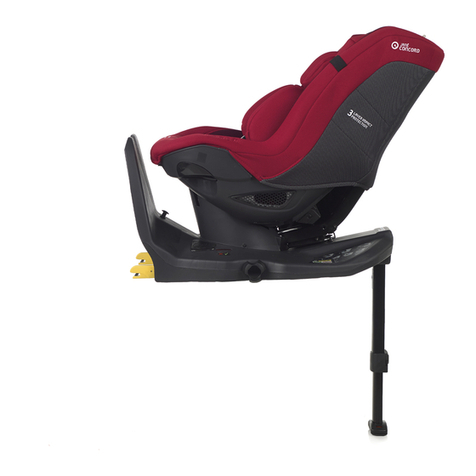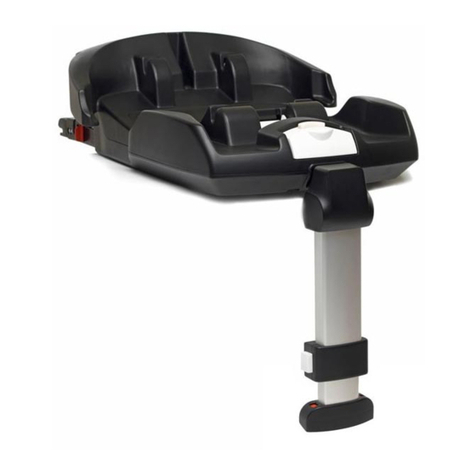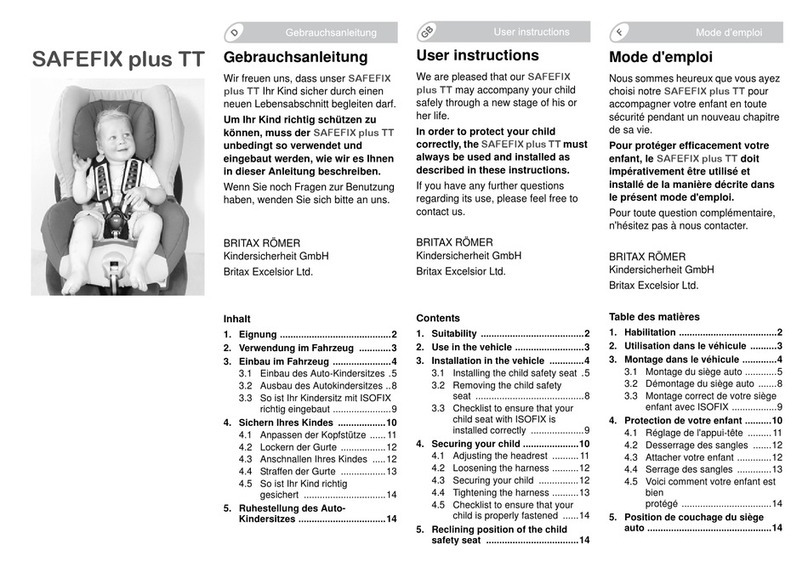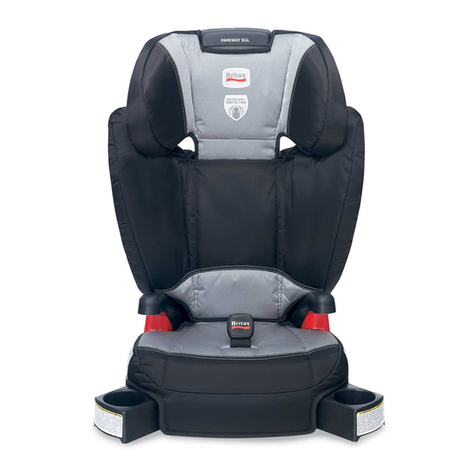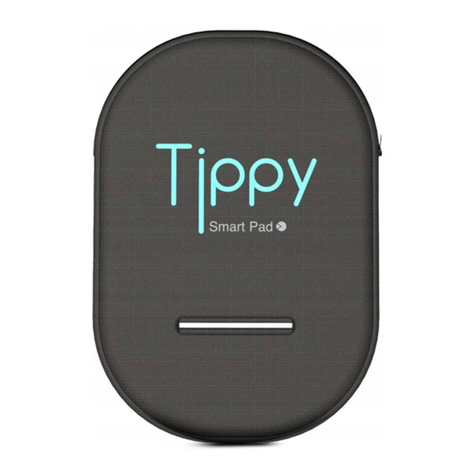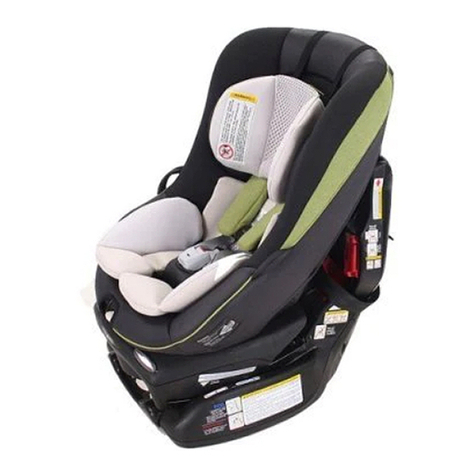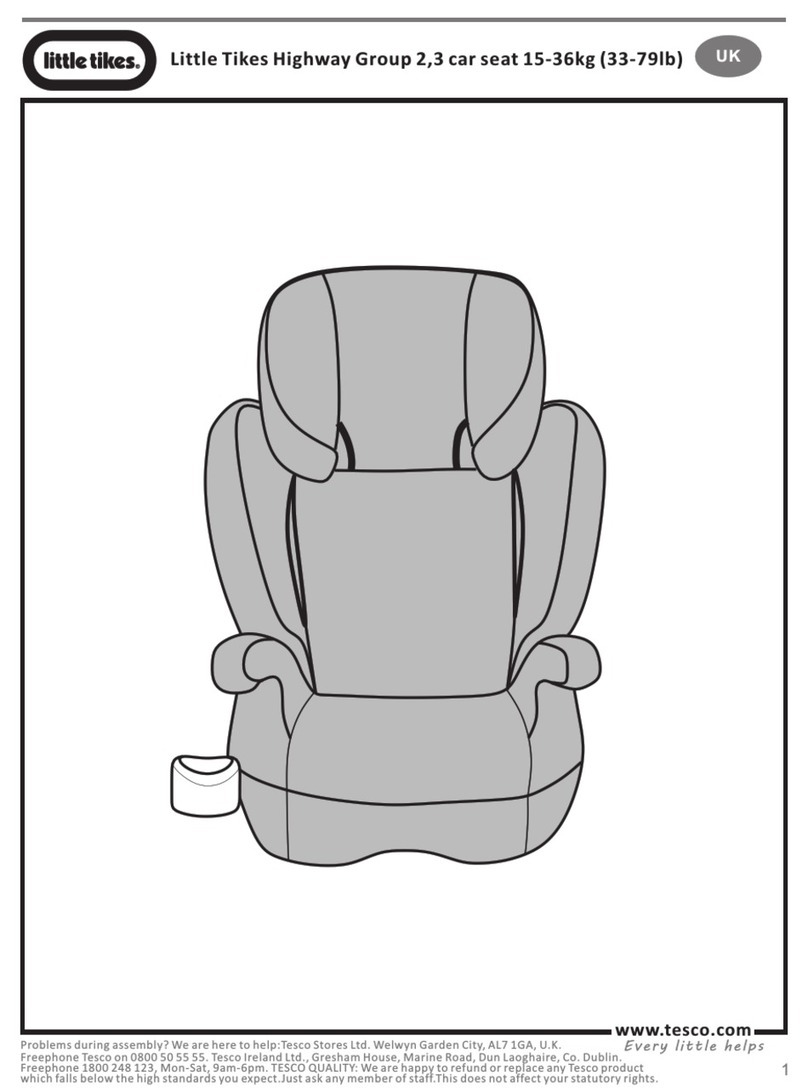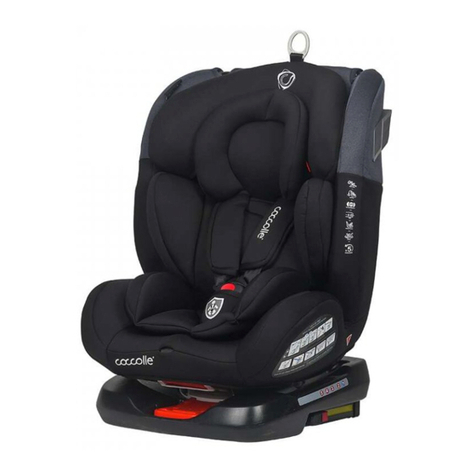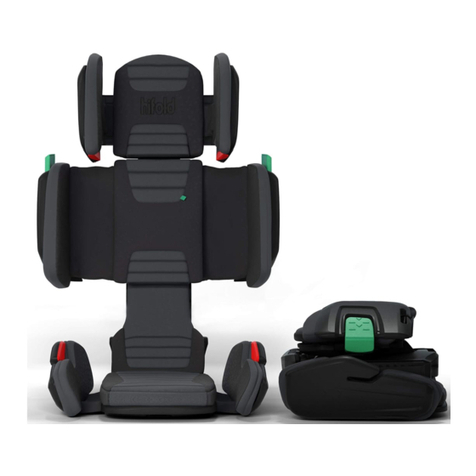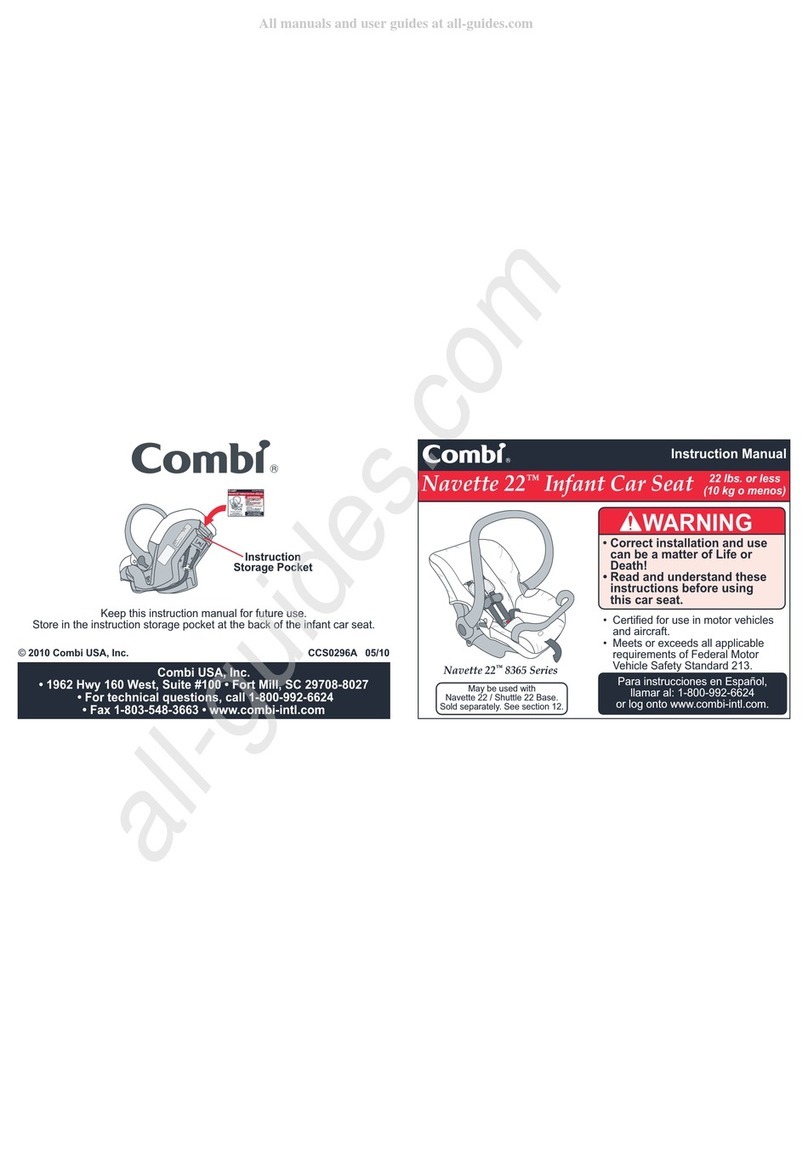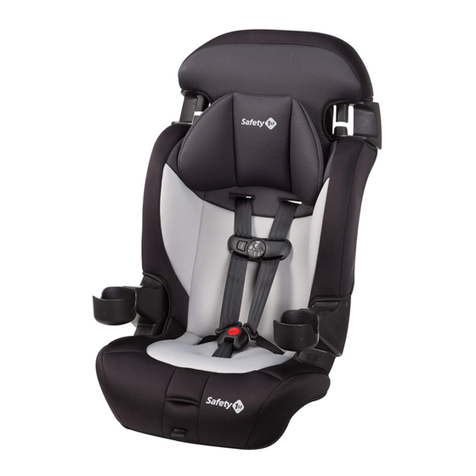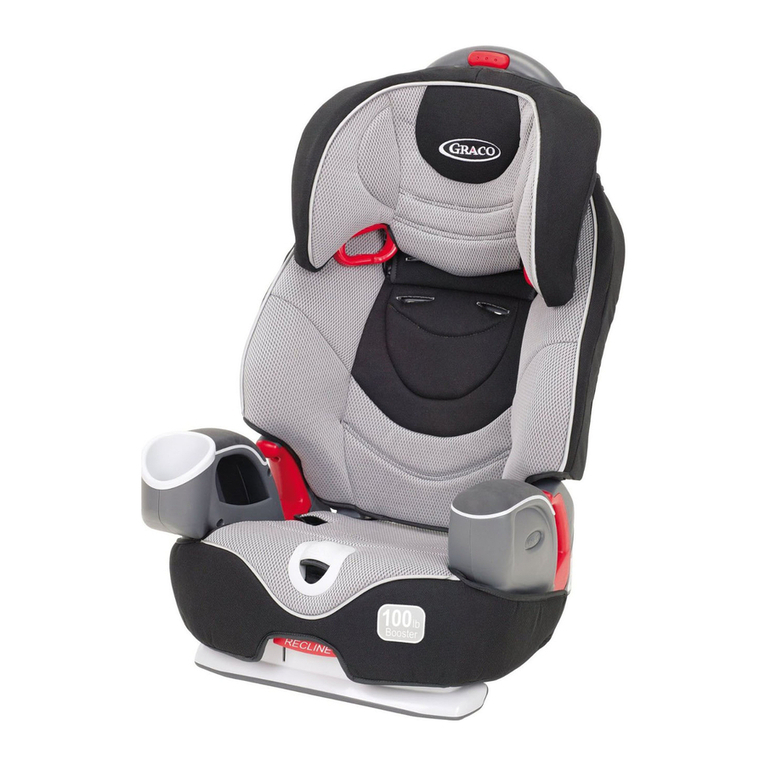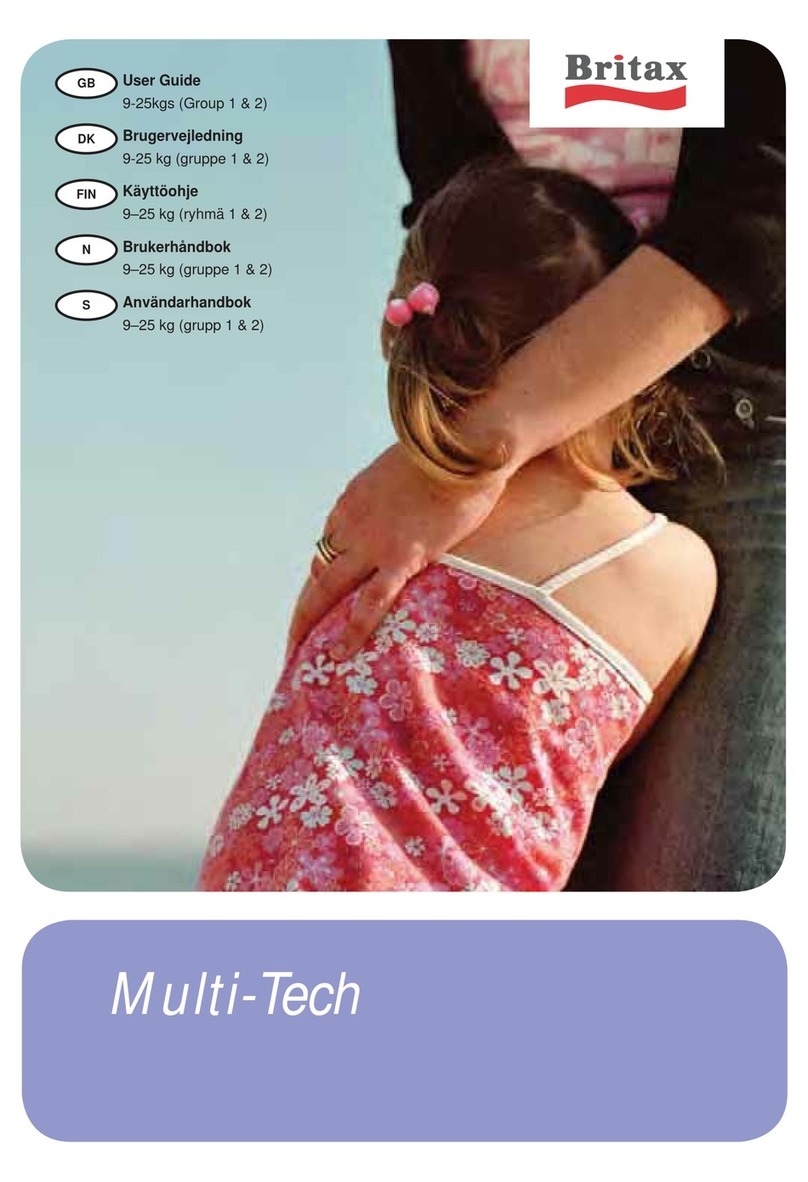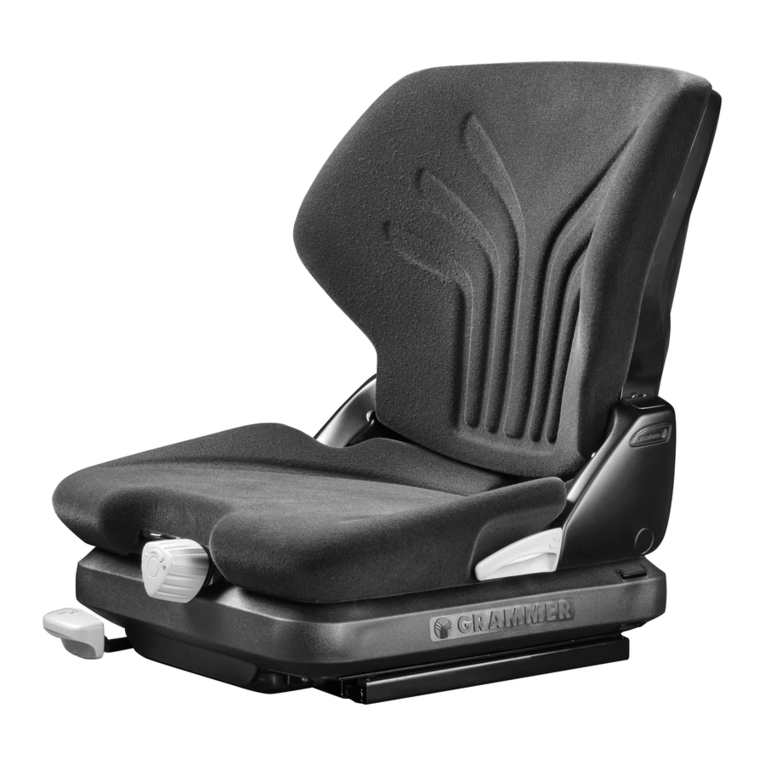
cruiser
6
cruiser
I
AVVERTENZE
• IMPORTANTE: leggi con attenzione e assicurati di comprendere tutte le istruzioni
riportate nel presente manuale e nel manuale per l’utente del veicolo in relazione ai
seggiolini di sicurezza. Installa e utilizza il seggiolino di sicurezza per bambini come
indicato nel manuale di istruzioni. Se il seggiolino non viene installato in modo
corretto, il bambino potrebbe subire lesioni gravi o persino la morte. Conserva le
istruzioni insieme al sistema di ritenuta per consultazioni future.
• IMPORTANTE: i bambini con basso peso alla nascita o nati prematuri possono
trovarsi in particolari condizioni mediche. In tali circostanze, prima di lasciare
l’ospedale e utilizzare il sistema di ritenuta per la prima volta, consulta un medico o
il personale sanitario per assicurarti che il sistema di ritenuta sia idoneo.
• 1. Verifica che tutte le cinture che fissano il sistema di ritenuta all’auto siano tese,
che quelle che trattengono il bambino siano aderenti al corpo del bambino e che
nessuna cintura sia attorcigliata.
• 2. Verifica che la cintura addominale sia posizionata il più in basso possibile, in
modo tale che il bacino del bambino sia trattenuto fermamente, per evitare che il
bambino esca dal seggiolino di sicurezza.
• 3. Il sistema di ritenuta va sostituito se ha subito forti tensioni in caso in incidente.
• 4. Verifica che il sistema di ritenuta sia installato in modo tale che, durante l’uso
quotidiano, gli elementi rigidi o in plastica non rimangano incastrati nelle porte o
nelle parti mobili dei sedili.
• 5. È pericoloso apportare modifiche o aggiunte al sistema di ritenuta senza
l’autorizzazione dell’apposito organismo omologatore; inoltre, è pericoloso non
seguire correttamente le istruzioni di installazione fornite dal fabbricante del sistema
di ritenuta.
• 6. BRUCIATURE: nel caso in cui il seggiolino di sicurezza non comprenda il
rivestimento in tela, tienilo lontano dalla luce solare, dato che potrebbe surriscaldarsi
e procurare lesioni alla pelle del bambino.
• 7. NON lasciare il bambino sul seggiolino di sicurezza senza supervisione, neanche
per brevi periodi di tempo.
• 8. Verifica che i bagagli e qualsiasi altro oggetto che potrebbe provocare lesioni in
caso di incidente siano ben trattenuti.
• 9. A) NON utilizzare il sistema di ritenuta senza il suo rivestimento. B) NON sostituire
il rivestimento del seggiolino con un altro che non sia raccomandato dal fabbricante,
dato che è parte integrante del sistema di ritenuta.
• 10. NON utilizzare il sistema di ritenuta se la posizione dell’ancoraggio della cintura
di sicurezza del veicolo nei principali punti di connessione e carico non è corretta.
Contatta il fabbricante se hai dubbi rispetto a questo punto.
• 11. NON utilizzare punti di connessione e carico diversi da quelli indicati nelle
istruzioni e sul sistema di ritenuta. Contatta il fabbricante se hai dubbi rispetto a
questo punto.
• 12. Leggi il manuale di istruzioni del fabbricante del veicolo prima di installare
questo sistema di ritenuta i-Size.



